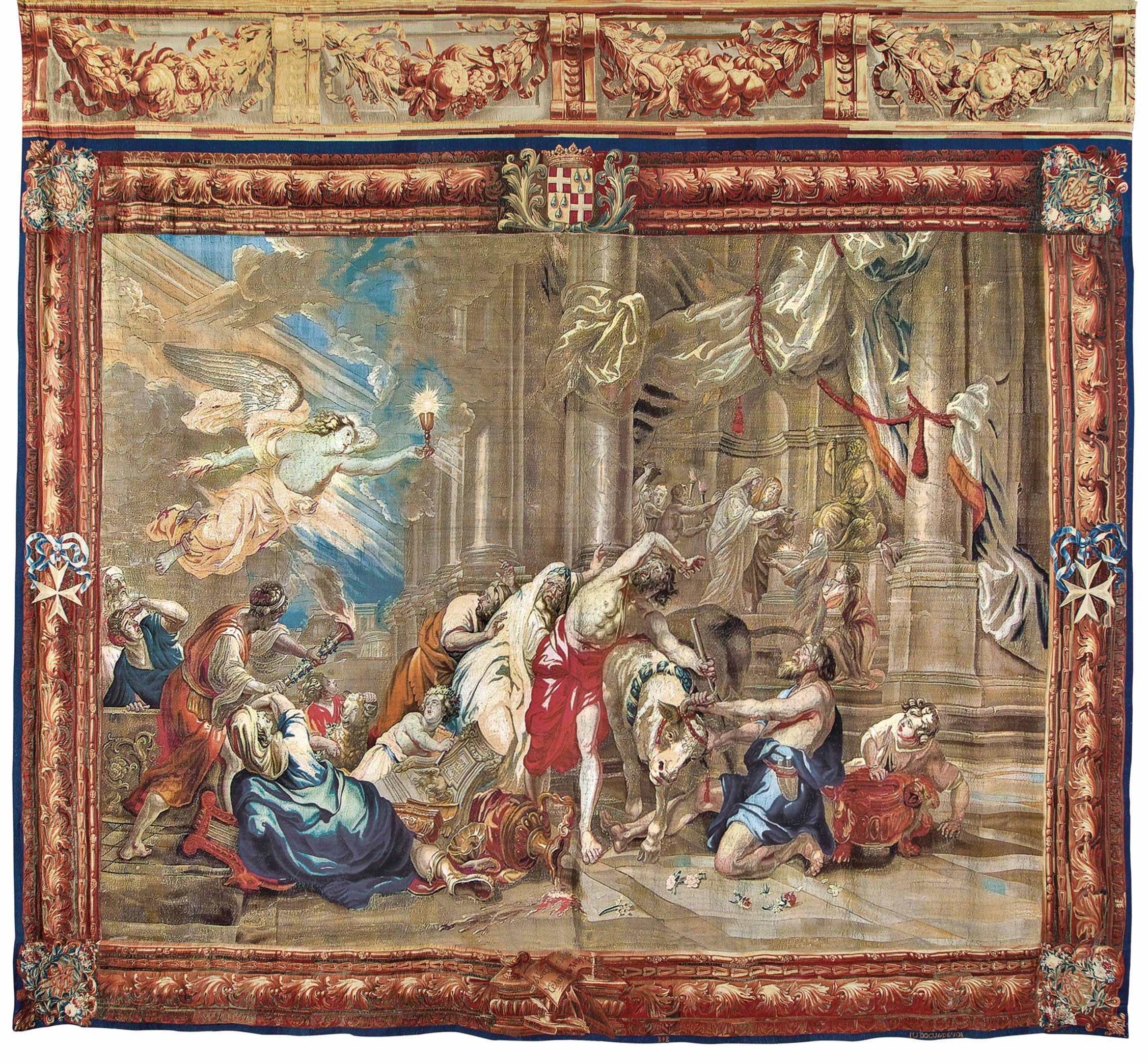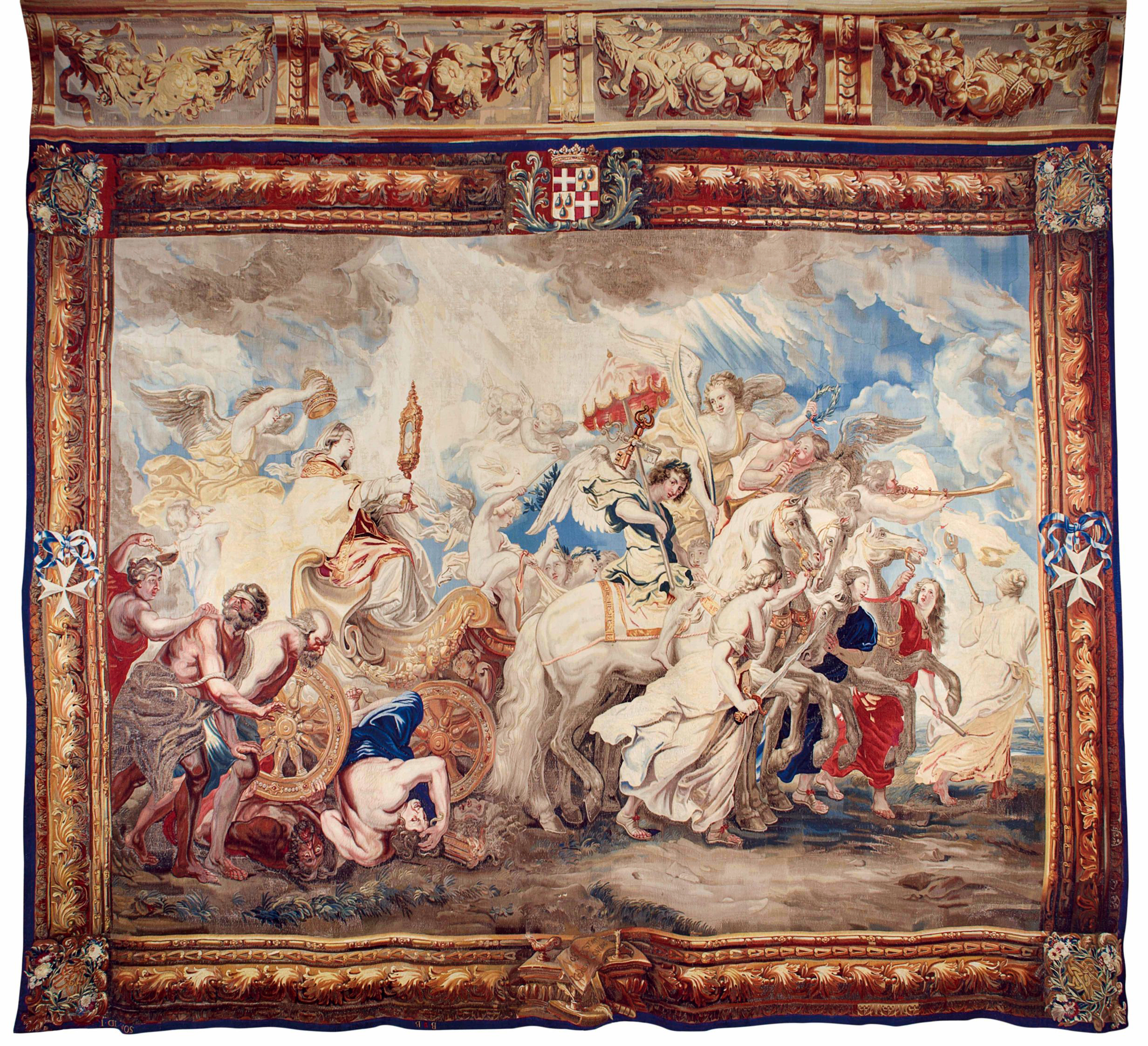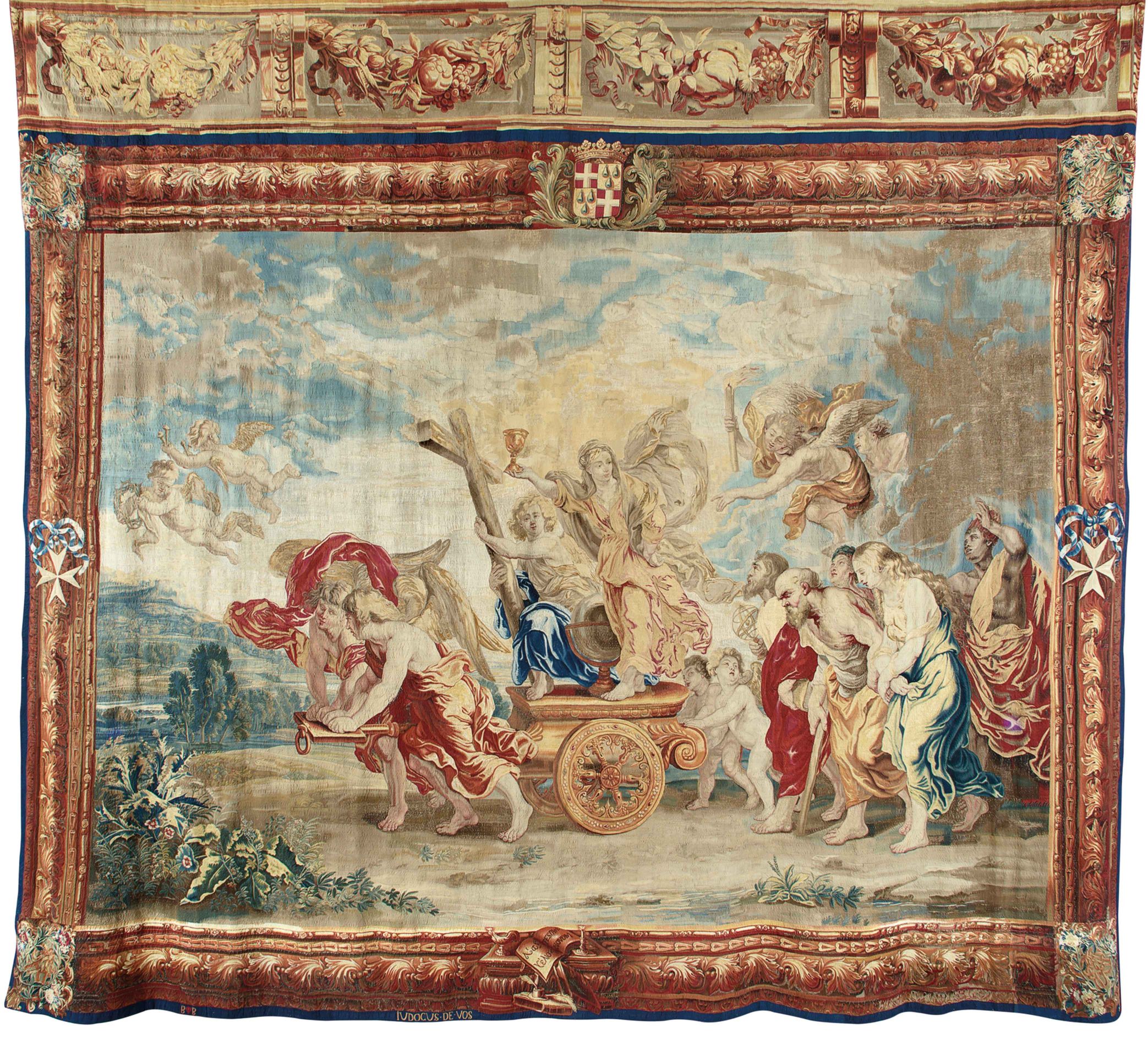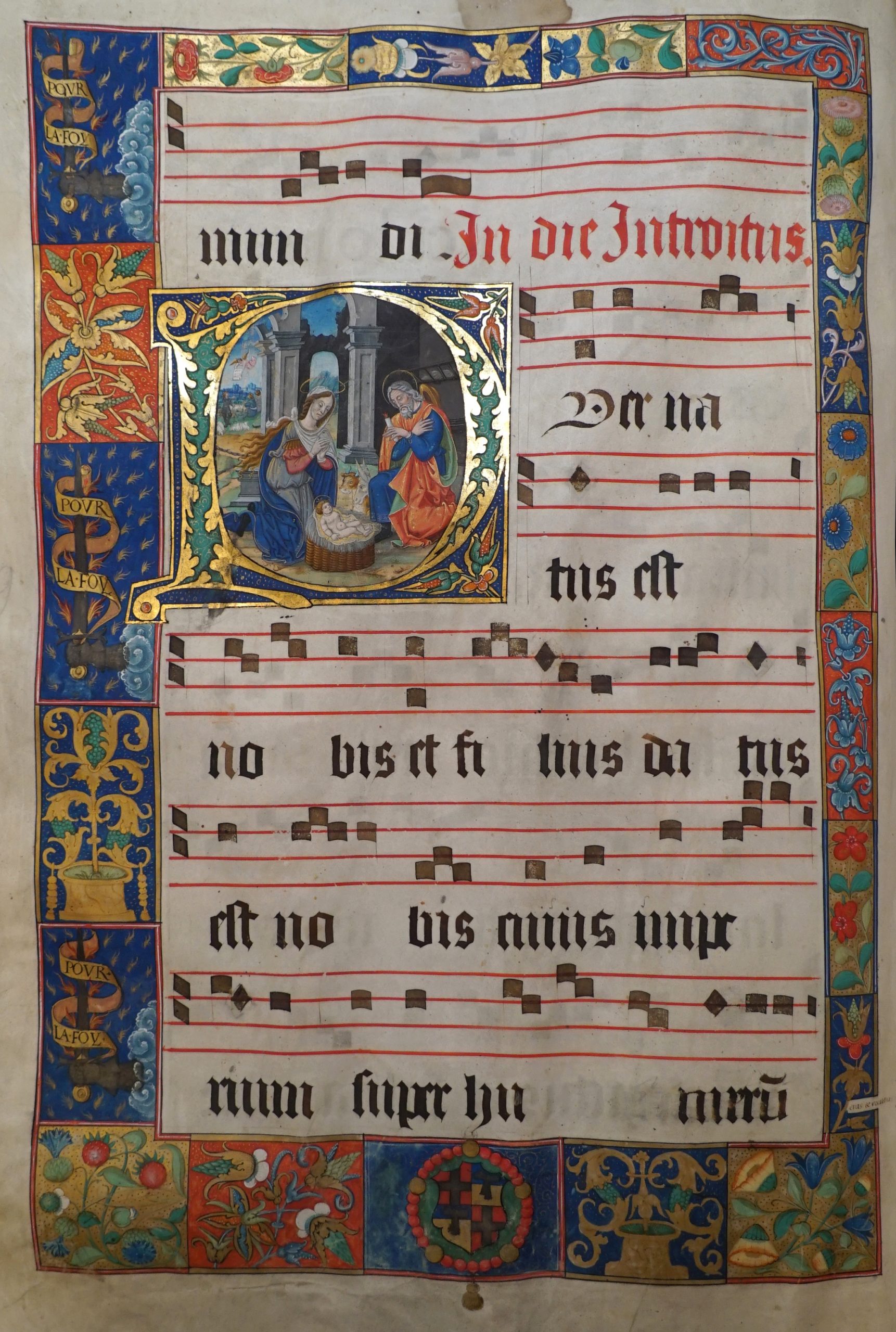The Museum Collections
Discover the Museum’s unique collection to be displayed in the New Museum.
The Set of Tapestries
The set of Tapestries at St John’s Co-Cathedral was a gift made by the Aragonese Grand Master Ramon Perellos y Roccaful to the church upon his election in 1697. The Statute of the Order stated that newly elected Grand Masters would present the Conventual Church of the Order with a gift on their appointment. The tapestries are the largest complete set in the world and consist of twenty-nine pieces ordered from the weaver Judocus de Vos in Brussels. The set reached Malta by 1702.
The tapestries depict the Triumph of the Eucharist and scenes from the life of Christ. The designs of the tapestries about the Eucharist were based on cartoons made by the Flemish artist Peter Paul Rubens that he had originally made for the Infanta Isabella of Spain. The scenes depicting the life of Christ are based on other masterpieces by Rubens and Poussin. Fourteen panels represent the Virgin Mary, Christ the Saviour and the Apostles and the Grand Master Perellos’ full-length portrait complete the set. The tapestries were made to hang from the cornice along the nave of the church during important occasions such as the feast of St John the Baptist. The tapestries were woven entirely from the finest wool and silk yarns and measure six meters in height. The large dimensions and the exuberant character of the designs make this set one of the most spectacular interpretations of Baroque art and brought the most dazzling embellishment to the church. The set of tapestries was one of the most outstanding gifts the church received. This set of tapestries was an expression of the supremacy of the Catholic Church and the munificence of the Grand Master and the Order.
Sacred Vestments
The Grand Masters of the Order of St John donated several sets of liturgical vestments to their conventual church. These garments were worn during important liturgical and ceremonial occasions.
The inventories of the Order record thirteen sets of vestments given as gifts. The garments were made from silk satin and intricately embroidered with multi-coloured silk yarns and gold and silver threads. The colour of the vestments was chosen according to the liturgical calendar to add symbolic meaning to the liturgy. The set donated by Grand Master Nicolas Cotoner is richly embroidered with floral motifs, many of which carry a symbolic meaning. The adornment of embroidered flowers was a form of art that emerged during the Baroque period when rich adornment was encouraged as a form of veneration towards the Eucharist. Part of this collection will be displayed in The New Museum.
The Choral Books
These manuscripts relate to the early part of the Knights’ stay in Malta. They are by far the most beautifully executed choral books on the island. There are three sets which were all gifts from different grand masters.
C1. THE GRADUALS OF L’ISLE ADAM
The largest and most important set consists of ten illuminated choral books. They were given to the church as a gift by Grand Master Philippe Villiers de L’Isle Adam who reigned from 1521 to 1534. His coat-of-arms is frequently displayed on them. This type of choral book is called a gradual that consists of chants for the Mass of the Roman Catholic church made to accompany the service.
Each choral book features hand-painted illuminations of exceptional beauty with gold leaf as a background adding to their brilliance. These splendid miniatures (as they are called due to their minute detail) reflect the artistic qualities of the different artists.
C2. THE VERDALLE ANTIPHONARIES
The set of choral books, bearing the coat-of-arms of Grand Master Verdalle are referred to as antiphonaries, they contain the sung parts of the divine office (the musical sections used during daily services, at the various canonical hours of the day that do not feature in graduals).
The Verdalle antiphonaries number seven in total and contain the Proper and Common of saints. All are made from parchment and have several illuminated initials.
C3. ANTOINE DE PAULE’S ANTIPHONARIES
The collection of Grand Master Antonie de Paule consists of two manuscripts in parchment. They are antiphonaries for the Temporal cycle of the church year.
Part of this collection will be displayed in The New Museum.
The Silver Collection
The collection at St John’s Co-Cathedral houses several works and objet d’art of artistic significance including chalices, reliquaries, monstrances and items of similar nature. This includes the Monstrance for the relic of St John by Ciro Ferri, containing the right hand of St John the Baptist. This was commissioned by Grand Master Gregorio Carafa and was placed within the Oratory of the Beheading.
A coral monstrance is a splendid example of artwork produced in Trapani which flourished during the 17th century. Another monstrance of rock crystal and silver gilt indicates a style closer to Northern Italy. These objects reflect the Knights and members of the Order as cultivated patrons with refined tastes.




